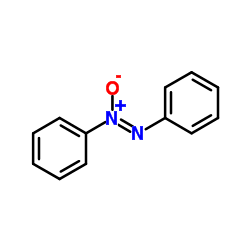[The metabolism of fenazox in tomato plants].
M Stock, A Bernasch, H R Schütte
Index: Nahrung 29(5) , 473-9, (1985)
Full Text: HTML
Abstract
Results from investigations on the metabolism of 14C-Fenazox show that in 6-8 weeks old tomato-plants (sort "Harzfeuer") the agent undergoes a biotransformation. After chromatographic separation the structure of the biotransformation products was elucidated by comparison to authentic test substances, by derivatization as well as by means of physico-chemical methods. With that, the following metabolites were identified: non-transformed Fenazox, o-hydroxyazobenzene, o-hydroxyaniline, and p-hydroxyaniline. Probably, the agent is first transformed enzymatically or non-enzymatically into o-hydroxyazobenzene, then follows a reductive cleavage into o-hydroxyaniline and aniline. In its turn, the latter is transformed into o-hydroxy- and p-hydroxyaniline. Experiments in the field of transformation kinetics indicated that the concentration of the applied Fenazox rapidly decreases and that the first transformation product o-hydroxyazobenzene in the beginning increases and then again decreases in its concentration. With increasing application time it comes to an increase of the non-extractable residues.
Related Compounds
| Structure | Name/CAS No. | Molecular Formula | Articles |
|---|---|---|---|
 |
fentoxan
CAS:495-48-7 |
C12H10N2O |
|
Reduction of nitroarenes to azoxybenzenes by potassium boroh...
2011-01-01 [Molecules 16 , 3563-3568, (2011)] |
|
[A case of suicide suspected of poisoning from taking some a...
1991-04-01 [Nihon Hoigaku. Zasshi 45(2) , 158-65, (1991)] |
|
[Distribution and metabolism of azoxybenzene in the rat].
1989-05-01 [Z. Gesamte Hyg. 35(5) , 255-7, (1989)] |
|
Investigations of myelotoxic effects in rats.
1991-01-01 [Arch. Toxicol. Suppl. 14 , 83-7, (1991)] |
|
Chloracne and chloracnegens.
1985-10-01 [J. Am. Acad. Dermatol. 13(4) , 539-58, (1985)] |